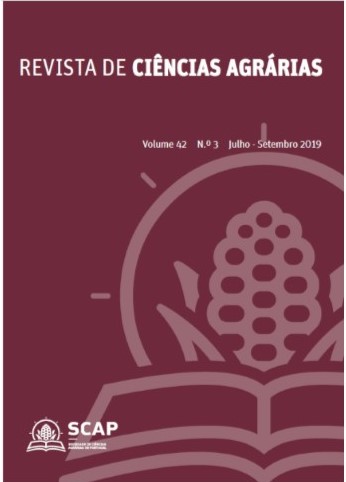Agentes de biocontrole no manejo de Pratylenchus brachyurus na cultura da soja
DOI:
https://doi.org/10.19084/rca.17201Abstract
The root-lesion-nematode, Pratylenchus brachyurus, is considered one of the main pathogens of soybean crop in the Brazilian Cerrado. The objective of this work was to evaluate the potential of different fungi species in the management of P. brachyurus in soybean. A completely randomized design, in a factorial scheme (4 x 4 + 2), consisting of four species of fungi: Beauveria bassiana, Trichoderma harzianum, Metarhizium anisopliae and Paecilomyces lilacinus, with four forms of application (in seed, furrow, seed + furrow and cover) and two additional controls (water and nematicide), with five replicates was used. Soybean plants cv. Soy Tech 820 RR were inoculated with 50000 eggs and second stage juveniles (J2) of P. brachyurus. After 60 days of application of the treatments, parasitism and agronomic evaluations were performed on soybean. The fungi used in the control, influenced positively in almost all the vegetative characteristics of the plants, promoted by the marked reduction of the number of juveniles in the root and in the soil and, mainly, by the decrease in the number of eggs in the roots. The forms of application did not directly influence the action of the biocontrol agents and all microorganisms behaved in a protective way, making it impossible or slowing the nematodes parasitism on the roots of the plants.


